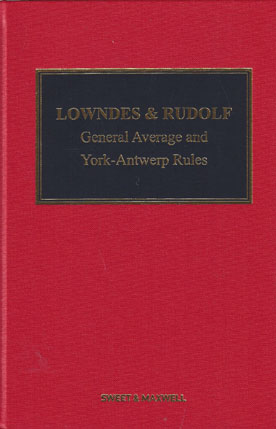We are now closed for the Christmas and New Year period, returning on Monday 5th January 2026. Orders placed during this time will be processed upon our return on 5th January.

Now in its 15th edition, Lowndes & Rudolf sets out, analyses and comments on the York-Antwerp rules, which govern the principle of general average in maritime law.
New to edition: